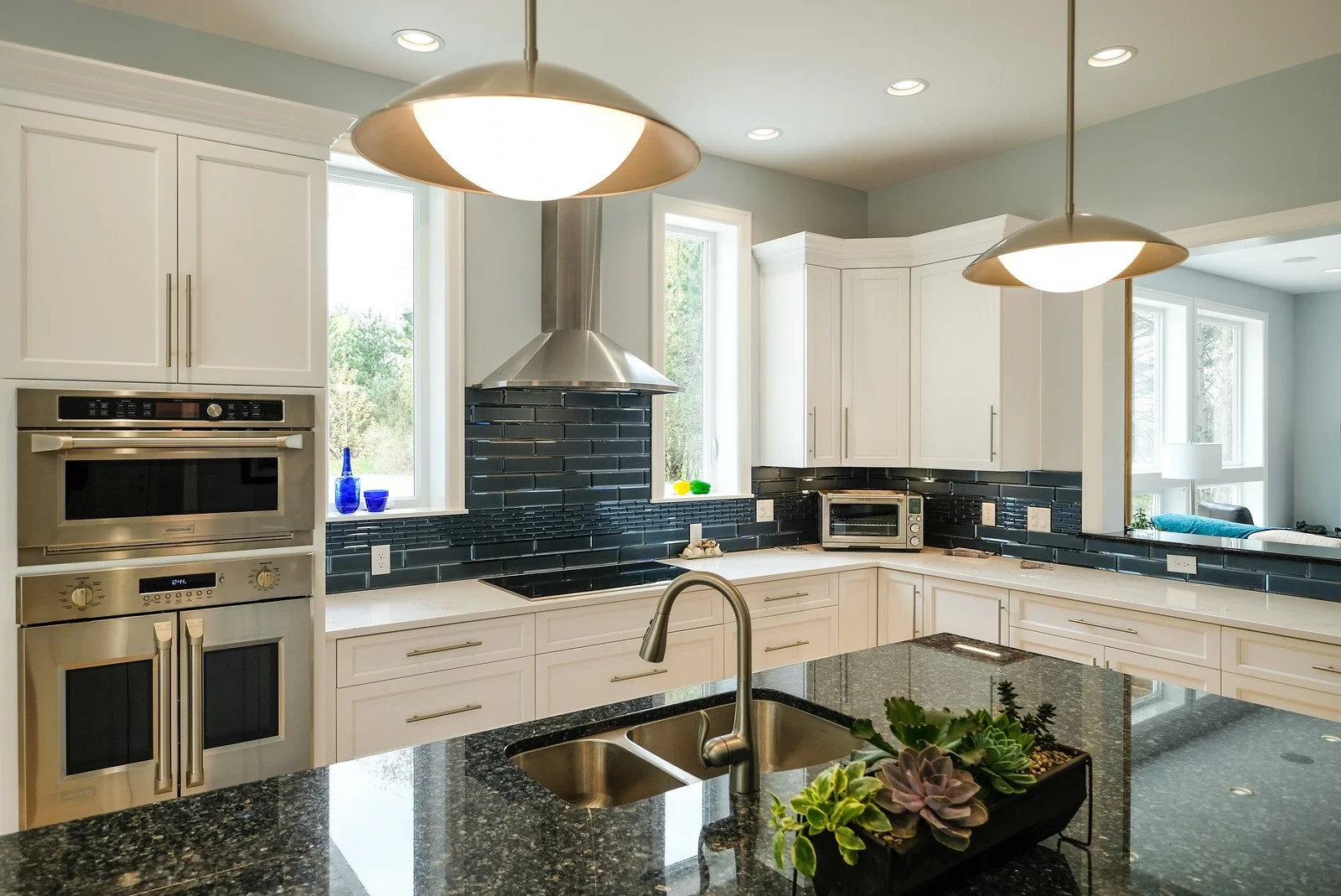Resealing your natural stone surfaces: maintaining granite, marble, and quartzite countertops
Natural stone countertops are a timeless addition to any kitchen or bathroom, adding a touch of elegance and sophistication. Whether it's granite, marble, or quartzite, these surfaces offer a unique blend of beauty and durability that can withstand the test of time. However, regular maintenance, including resealing, ensures longevity and a pristine appearance. In this article, we will discuss the significance of resealing natural stone countertops, the impact of wear and tear on these surfaces, the role of the sealer in preserving their quality, and practical tips for resealing countertops that can prolong their lifespan and maintain their allure.
Why do natural stone countertops require resealing?
One of the primary reasons homeowners opt for natural stone countertops is their ability to resist stains, scratches, and heat; however, natural stones, like granite, marble, and quartzite, are porous materials, meaning they can absorb liquids. This can lead to staining and discoloration on stone countertops, especially in heavily used areas like kitchens, bars, and bathrooms. To help combat this, we triple-seal all natural stone countertops before they leave our shop. Still, over time, exposure to daily usage, spills, and cleaning agents can gradually break down the surface's protective layer. This breakdown can make the stone susceptible to staining, and sealing addresses this issue by reinforcing the protective coating, forming a barrier between the stone and external elements.
How often do my granite, marble, and quartzite countertops need to be resealed?
Our recommendation for resealing frequency largely depends on your stone selection and the amount of usage the countertop experiences. Although we apply a sealer to every natural stone top we fabricate, each stone possesses unique characteristics, so the frequency of resealing can vary greatly. Natural stone can go anywhere from 1-10 years (or longer) without needing to be resealed. For example, darker and more dense stones (i.e., black granite) don’t need to be sealed as frequently, whereas softer and less dense stones (i.e., Carrara marble) may need to be maintained more often. Additionally, heavily used areas, such as kitchen countertops, may need to be resealed more often as they are more susceptible to stains, moisture, and wear. High-traffic areas are also more frequently exposed to cleaning products that can degrade sealer over time.
Natural stone can go anywhere from 1-10 years (or longer) without needing to be resealed.
Do quartz and porcelain countertops need to be resealed?
Engineered stone countertops like quartz and porcelain do not require resealing as they have a much lower porosity than granite, quartzite, and marble. If you apply a sealer to a surface with low porosity, the product will likely build up on the surface rather than absorb into the stone.
The water test: How to Tell if Your Natural Stone Countertops Need Resealing
Generally speaking, an easy way to determine if your sealer is performing would be to apply a drop of water at least 1 inch in diameter to the top of the stone and let it sit for 10-15 minutes. Cover the area with a glass to inhibit evaporation. Wipe away water with a dry cloth. If there is rapid absorption and a darkening of the stone, it is time to re-apply a sealer.
How to reseal your countertops
You can reseal countertops on your own, requiring minimal effort. The average kitchen can be resealed within an hour.
What You’ll Need:
Stone sealer. We recommend MORE Premium Stone Sealer.
Handheld paint brush, roller, or pad.
Drop cloths or plastic tarps.
How to Prep Your Countertops for Resealing:
Clear your countertops of all items and ensure that the countertop is thoroughly clean and dry. Be sure to remove any built-up dirt, grease, or grime that may be stuck on the surface.
While the countertop is drying, cover the surrounding cabinetry and flooring with cloths or tarps.
Ventilate the area as best as possible by opening windows and doors until the sealer fumes dissipate.
How to Reseal Your Countertops:
Per the bottle’s instructions, apply the sealer to the countertop and spread it around using the brush, roller, or pad. You can work in small sections if needed, but be sure to cover the entire surface evenly.
Allow the sealer to absorb into the stone. Refer to the sealer’s instructions for specific absorption time. If a second coat is needed, apply it when the first coat is almost but not entirely dry.
After the recommended amount of time, wipe away any excess sealer with a clean, dry cloth. This is essential because dried sealer residue can leave a haze or streaks on the countertop.
Allow the sealer to dry completely; if possible, wait up to 24-48 hours to use the countertop.
How to Prolong the Life of Your Sealer
A few critical maintenance practices should be followed to prolong the life of a natural stone countertop sealer. Firstly, it is crucial to clean spills promptly using a mild cleaner to prevent staining. Regularly dusting and wiping the countertop with a soft cloth or sponge will help maintain its sheen. Adequate protection against heat and scratches is crucial; trivets, cutting boards, and coasters are highly recommended. It is essential to avoid using harsh chemicals or abrasive cleaners that can degrade the sealer, like bleach, vinegar, or furniture polish.
We recommend MORE Stone & Quartz Cleaner for daily cleaning and our 3-in-1 Spray Wax for monthly polishing and protecting.
The sealer should also be inspected periodically for any signs of wear or damage and resealed as necessary (see The Water Test above). By adopting these steps, one can ensure the longevity and beauty of their natural stone countertop.




